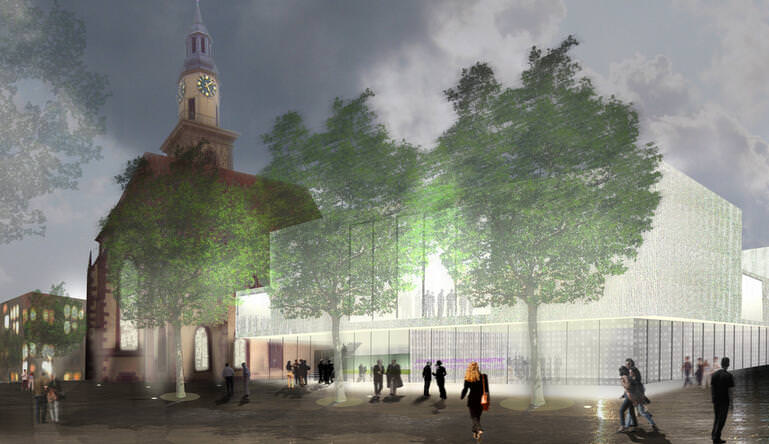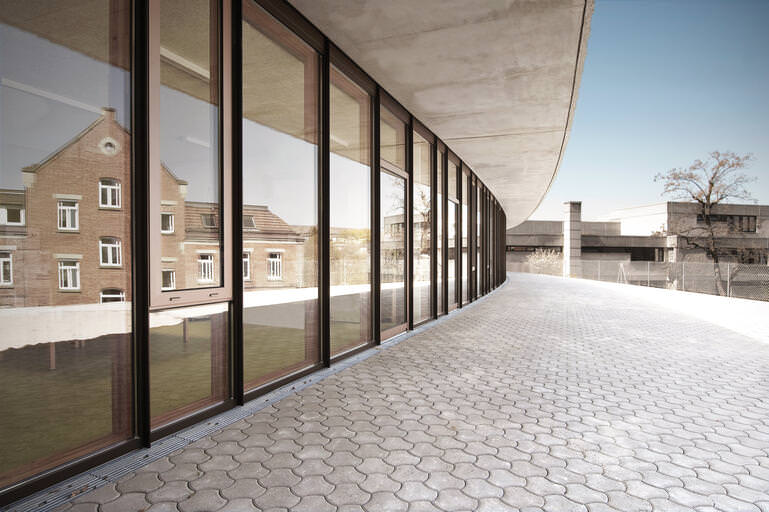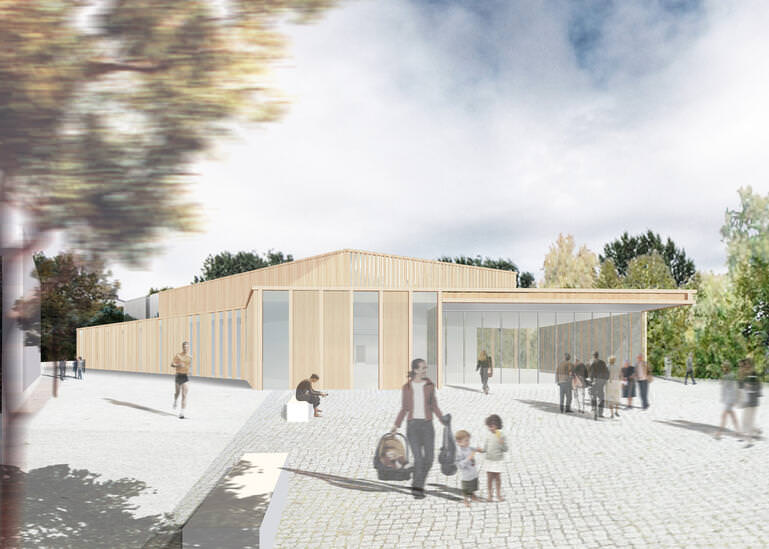On the silver tray
Hölderlinmuseum, Lauffen am Necker
Contribution in the context of the multiple commission for the new building of the city historical museum as well as the renovation of the historical Hölderlinhaus and the conception of the Hölderlin exhibition in Lauffen am Neckar - The Hölderlinhaus and the city museum are understood as building blocks of an ensemble within the old walls. Despite the careful urban integration of the city museum in the historical inventory, the new building forms a contemporary contrast. The result is an identity-creating place that communicates history in today's context.

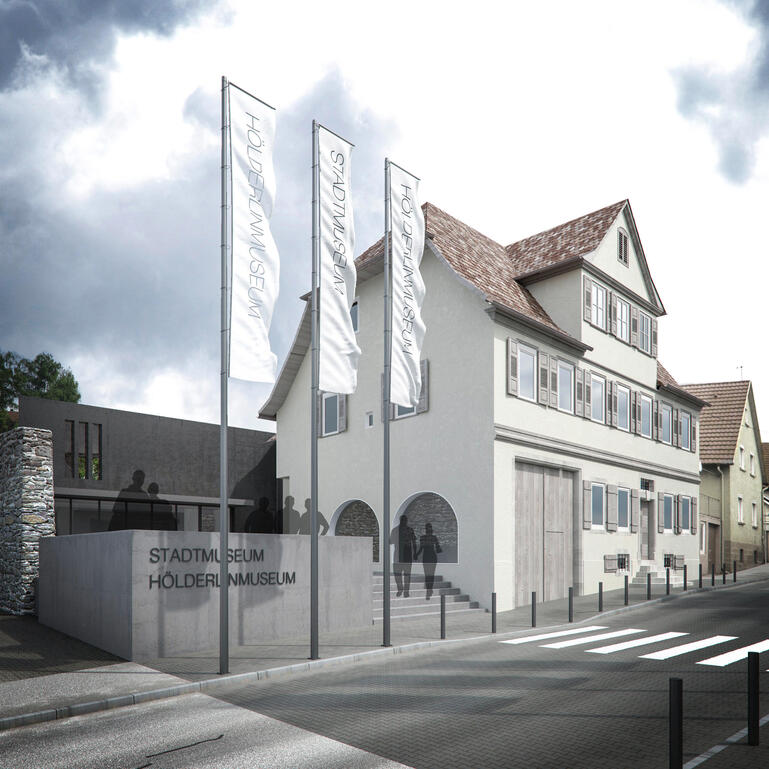
Exhibit Hölderlinhaus
The concept is based on the exemption of the "exhibit" Hölderlinhaus. The associated opening of the courtyard and the location of the new foyer in the historic passage are basic design decisions that allow separate use of both houses and the revitalization of the courtyard.
In the outdoor area between the two buildings, the courtyard spans the meeting and gathering area as well as the outdoor area of the daytime café - from where the two buildings can be accessed separately depending on the occasion. The historic courtyard flooring is complemented in contrasting materiality, the story remains so readable in the courtyard.
The ensemble, with its new surround in the form of a raised pre-area as a seating area, is given a clear address, which is supported by the redesign of the pavement surfaces in the street area as well as on the opposite side of the street.
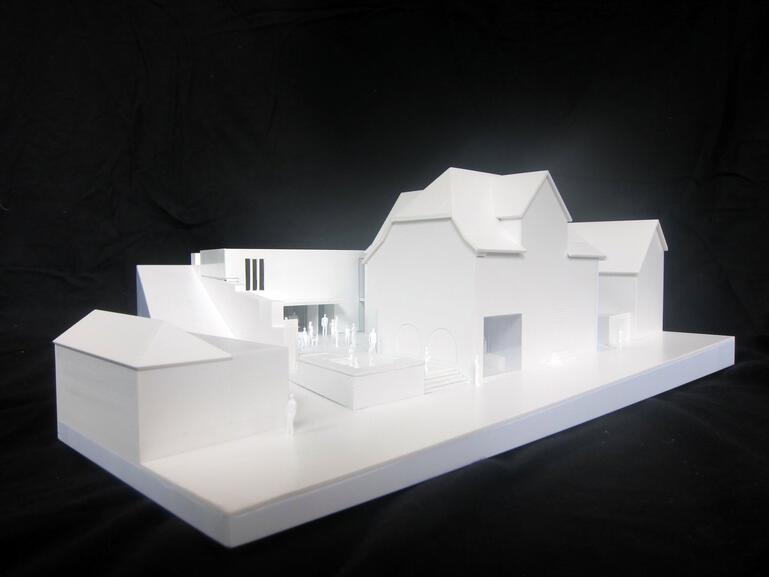
The historical monastery wall runs on the ground floor into the building, as the outer border becomes the formative spatial element.
City History Museum
The new building of the city historical museum forms the back end of the yard. The compact two-storey building takes up a volume compared to the historical inventory, but asserts itself through its black pigmented exposed concrete façade as an independent house. The historical monastery wall runs on the ground floor into the building, as the outer border becomes the formative spatial element.
The wheelchair accessible development is located in the gap between old and new building. Thus, not only the exhibition level in the 1st floor but also the different levels in the old building can be developed.
The café area on the ground floor has an open plan and can be flexibly combined with the adjoining area for temporary exhibitions or separated from it. This creates synergy effects for various occasions and usage scenarios (catering for vernissages and lectures, celebrations, etc.). If required, the café can also be operated independently of the exhibition and museum. The open-plan glass façade allows a generous opening to the courtyard and makes the café an independent attraction, especially during the summer months.
The city history exhibition on the 1st floor reaches the visitor via a single-flight staircase along the historic monastery wall. Above the view opens first by a panorama-like band of windows to the vineyard before the visitor is redirected to the introverted exhibition space and the concentration is focused on the exhibition. This develops along a chronological timeline, which is creatively integrated into the horizontal gap between the historic cloister wall and the attached concrete wall.
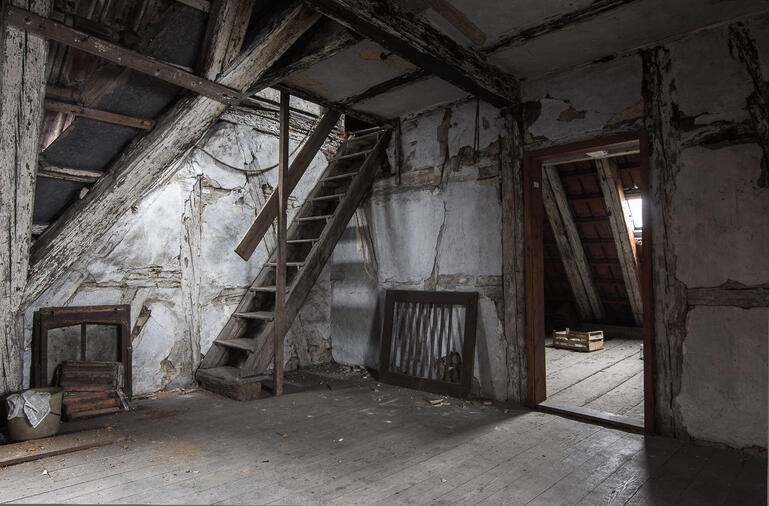
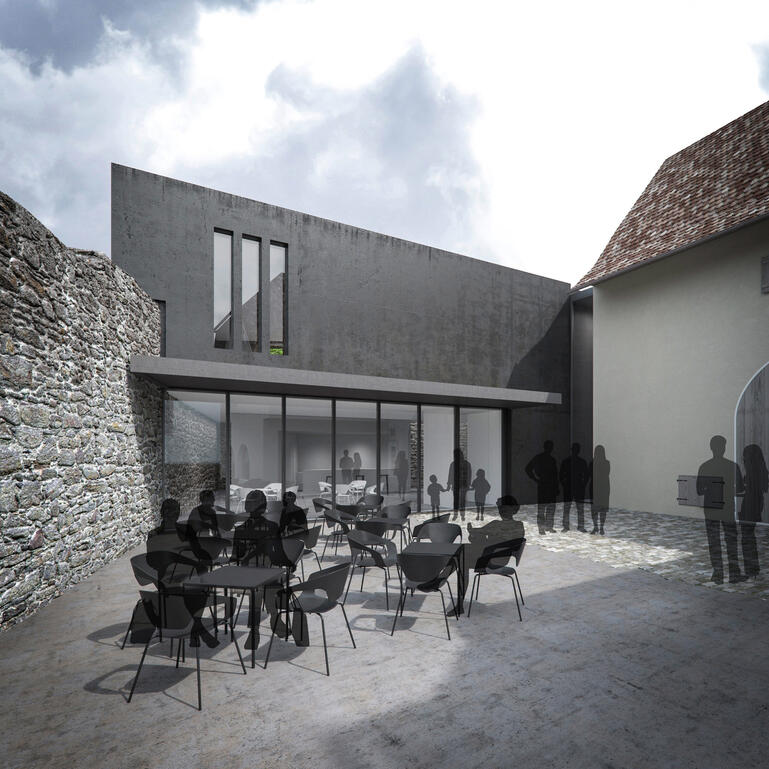
The view opens first through a panoramic window band to the vineyard before the visitor is redirected into the introverted exhibition space and his focus on the exhibition is focused.
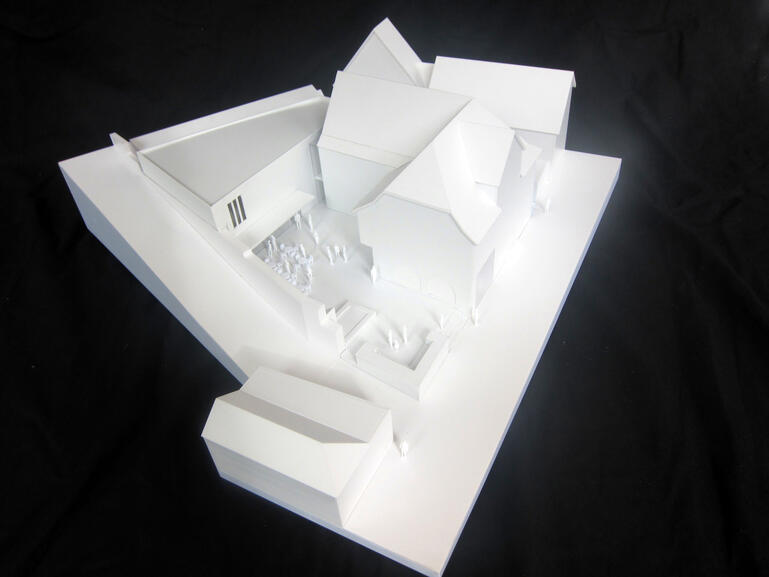
Poetic topography Hölderlins
The substantive idea for the Hölderlin exhibition is the unique position of the town of Lauffen am Neckar in the poet's biography, everything is made from here, connections can always be made here. The term "poetic topography Hölderlin" is based on a dissertation by Luigi Reitani.
The exhibition develops on the one hand along its biographical topography determined by the repeated changes of location during its life. On the other hand, this is superimposed with perspectivization and structuring of the landscape space in his work - the migration, the crossing of the space. In addition to the geographical space Hölderlin also measures large temporal spaces in his lyric work.
On this basis, four central showcases will be developed, each centered and turned diagonally, claiming an exhibition space. 3 are dedicated to the central locations of his life: Tübingen, Nürtingen, Lauffen am Necker, the fourth the lyrical spatial landscapes of his work.
Project information
Location
Lauffen am Necker, Germany
Client
Stadt Lauffen am Neckar
in Cooperation with
2av Medien
Coast GbR
Type of project
Multiple commission
Period
2009
